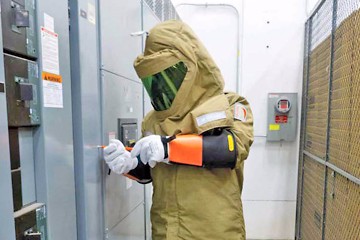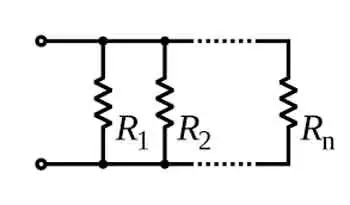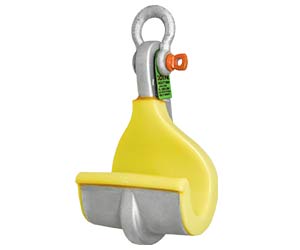PPE Performance – NFPA 70E Compliance

NFPA 70e Training
Our customized live online or in‑person group training can be delivered to your staff at your location.

- Live Online
- 6 hours Instructor-led
- Group Training Available
Download Our OSHA FS3529 Fact Sheet – Lockout/Tagout Safety Procedures

- Learn how to disable machines and isolate energy sources safely
- Follow OSHA guidelines for developing energy control programs
- Protect workers with proper lockout devices and annual inspections
PPE performance in arc flash protection is measured by arc rating, indicating the level of thermal energy the gear can withstand. It helps ensure worker safety by selecting PPE rated for specific incident energy levels.
Request a Free Training Quotation
What Is PPE Performance?
PPE Performance: The effectiveness of personal protective equipment (PPE) in safeguarding workers from hazards, particularly its capacity to resist thermal energy during incidents like arc flashes, quantified by arc ratings (cal/cm²).
-
✅ Arc Ratings: Indicate the energy level PPE can withstand before causing burns, measured in cal/cm².
-
✅ Testing Standards: PPE is evaluated using standards like ASTM F1959 and IEC 61482 to ensure protection against arc flash hazards.
-
✅ Material Selection: High-performing PPE utilizes flame-resistant materials like Nomex or Kevlar to maintain integrity under heat.
Whether you’re an electrician or a safety manager, understanding these factors empowers you to make informed choices for workplace safety. Explore arc flash PPE requirements that shape how gear is evaluated is critical to ensure compliance with industry standards.
PPE performance hinges on its capacity to shield workers from thermal energy during an electrical explosion. The key metric is the arc rating, which indicates how much energy (in cal/cm²) the PPE can absorb before a burn injury becomes likely. For example, gear rated at 4 cal/cm² suits low-risk tasks, while 40 cal/cm² handles high-hazard scenarios. Two measurements define this rating:
-
Arc Thermal Performance Value (ATPV): The energy level at which there’s a 50% chance of a second-degree burn.
-
Energy Breakopen Threshold (EBT): The energy at which the material tears open, exposing the wearer.
High-performing PPE uses materials like Nomex or Kevlar, which resist flames and maintain integrity under heat. These fabrics balance protection with comfort, ensuring workers can move freely. It also depends on proper fit and maintenance—worn-out gear loses its effectiveness. To understand how performance aligns with hazard levels, check out our guide on arc flash PPE categories.
Test Your Knowledge About Arc Flash!
Think you know Arc Flash? Take our quick, interactive quiz and test your knowledge in minutes.
- Instantly see your results and score
- Identify strengths and areas for improvement
- Challenge yourself on real-world electrical topics
How Is Arc Flash PPE Performance Tested?
Performance is validated through rigorous testing to ensure it protects workers from thermal energy during electrical explosions. Industry standards like ASTM F1959 and IEC 61482 guide these tests in controlled labs that simulate real-world arc flash events, such as a 480V panel failure. The process measures how well PPE resists heat, flames, and energy transfer, determining its arc rating—the energy (in cal/cm²) it can withstand before causing a burn.
Testing involves several steps:
- Thermal Exposure: PPE samples face an electric arc, mimicking high-energy incidents.
- Energy Assessment: Sensors calculate heat penetration to assign an Arc Thermal Performance Value (ATPV) or Energy Breakopen Threshold (EBT), ensuring protection against burns or material failure.
- Durability Check: Inspectors verify the gear resists tearing, melting, or igniting under stress.
- Wearability Evaluation: Some tests assess breathability to balance safety with comfort.
For example, a jacket rated at 25 cal/cm² must block enough energy for Category 3 hazards without compromising integrity. These tests align with safety regulations, but compliance starts with understanding broader standards. The rigorous testing behind PPE effectiveness is rooted in NFPA 70E PPE requirements, ensuring gear meets workplace needs. Regular maintenance, like inspecting for damage, preserves performance over time.
Choosing High-Performing PPE
Selecting PPE starts with a hazard analysis, identifying the risk at your worksite. Low-risk tasks (e.g., Category 1, 4 cal/cm²) need lightweight gear like arc-rated shirts, while high-risk jobs (e.g., Category 4, 40 cal/cm²) demand advanced protection. For extreme hazards, a 40 cal arc flash suit exemplifies PPE designed to withstand intense energies, using multi-layer fabrics for insulation.
Performance isn’t just about arc ratings. Consider these factors:
- Material Quality: Nomex offers flame resistance, while Kevlar adds durability.
- Fit and Comfort: Loose PPE reduces protection; heavy gear can cause fatigue.
- Layering: Combining arc-rated layers can boost performance only if each piece is compliant.
Before buying, check labels for arc ratings and NFPA 70E certification. A poorly fitted or damaged piece fails to perform, so inspect the gear regularly. Comfort matters, too—breathable fabrics prevent overheating during long shifts, ensuring workers stay protected without sacrificing productivity.
Quick Reference
Performance has three pillars: arc ratings, rigorous testing, and smart selection. Start with a hazard analysis to pinpoint your cal/cm² needs, then choose gear that balances protection with wearability. Visual tools can simplify this process, especially for teams juggling multiple risk levels. A quick way to compare requirements is by reviewing the arc flash PPE requirements chart, which outlines protection levels by category.
Frequently Asked Questions
Why is performance important for protection?
This refers to how well personal protective equipment resists hazards like heat, flame, and electrical energy during an electrical explosion. High-performing PPE, tested to NFPA 70E standards, can prevent severe injuries by reducing burn severity and protecting against thermal exposure. Employers must adhere to NFPA 70E PPE Requirements to ensure workers are equipped with appropriate protective gear for electrical hazards.
How is PPE tested and rated?
PPE is tested using methods like ASTM F1959 to determine its Arc Thermal Performance Value (ATPV), measured in calories per square centimetre (cal/cm²). This rating tells you how much energy the gear can absorb before causing second-degree burns, helping ensure that clothing is appropriate for the specific electrical hazard.
What factors affect the long-term performance?
Protective clothing performance can degrade over time due to repeated washing, UV exposure, contamination, and mechanical wear. Regular inspections and proper maintenance are critical to ensure that flame-resistant fabrics and arc-rated clothing continue to meet safety standards during use.
Electricity Today T&D Magazine Subscribe for FREE

- Timely insights from industry experts
- Practical solutions T&D engineers
- Free access to every issue








